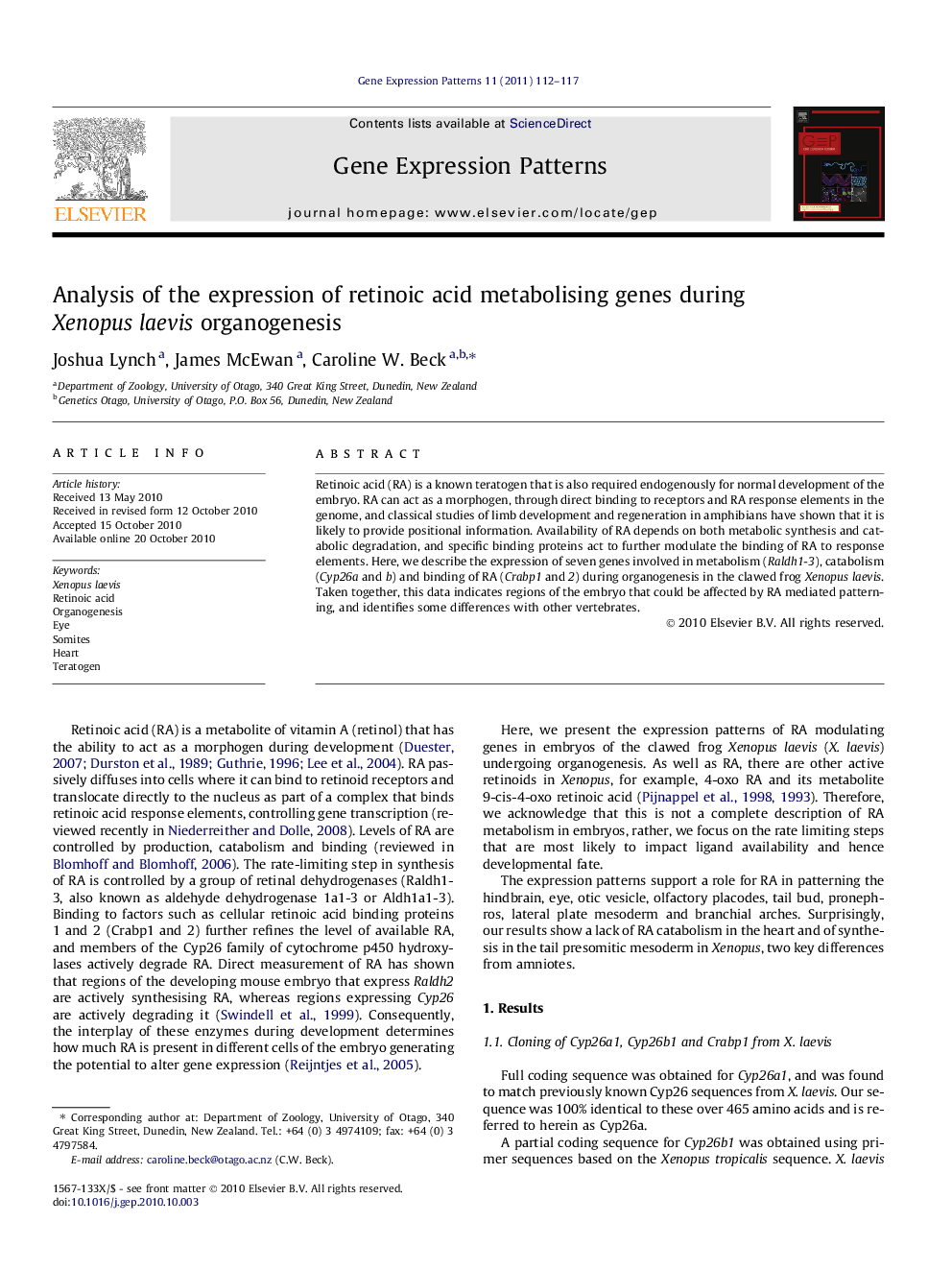| Article ID | Journal | Published Year | Pages | File Type |
|---|---|---|---|---|
| 8471106 | Gene Expression Patterns | 2011 | 6 Pages |
Abstract
Retinoic acid (RA) is a known teratogen that is also required endogenously for normal development of the embryo. RA can act as a morphogen, through direct binding to receptors and RA response elements in the genome, and classical studies of limb development and regeneration in amphibians have shown that it is likely to provide positional information. Availability of RA depends on both metabolic synthesis and catabolic degradation, and specific binding proteins act to further modulate the binding of RA to response elements. Here, we describe the expression of seven genes involved in metabolism (Raldh1-3), catabolism (Cyp26a and b) and binding of RA (Crabp1 and 2) during organogenesis in the clawed frog Xenopus laevis. Taken together, this data indicates regions of the embryo that could be affected by RA mediated patterning, and identifies some differences with other vertebrates.
Related Topics
Life Sciences
Biochemistry, Genetics and Molecular Biology
Cell Biology
Authors
Joshua Lynch, James McEwan, Caroline W. Beck,
